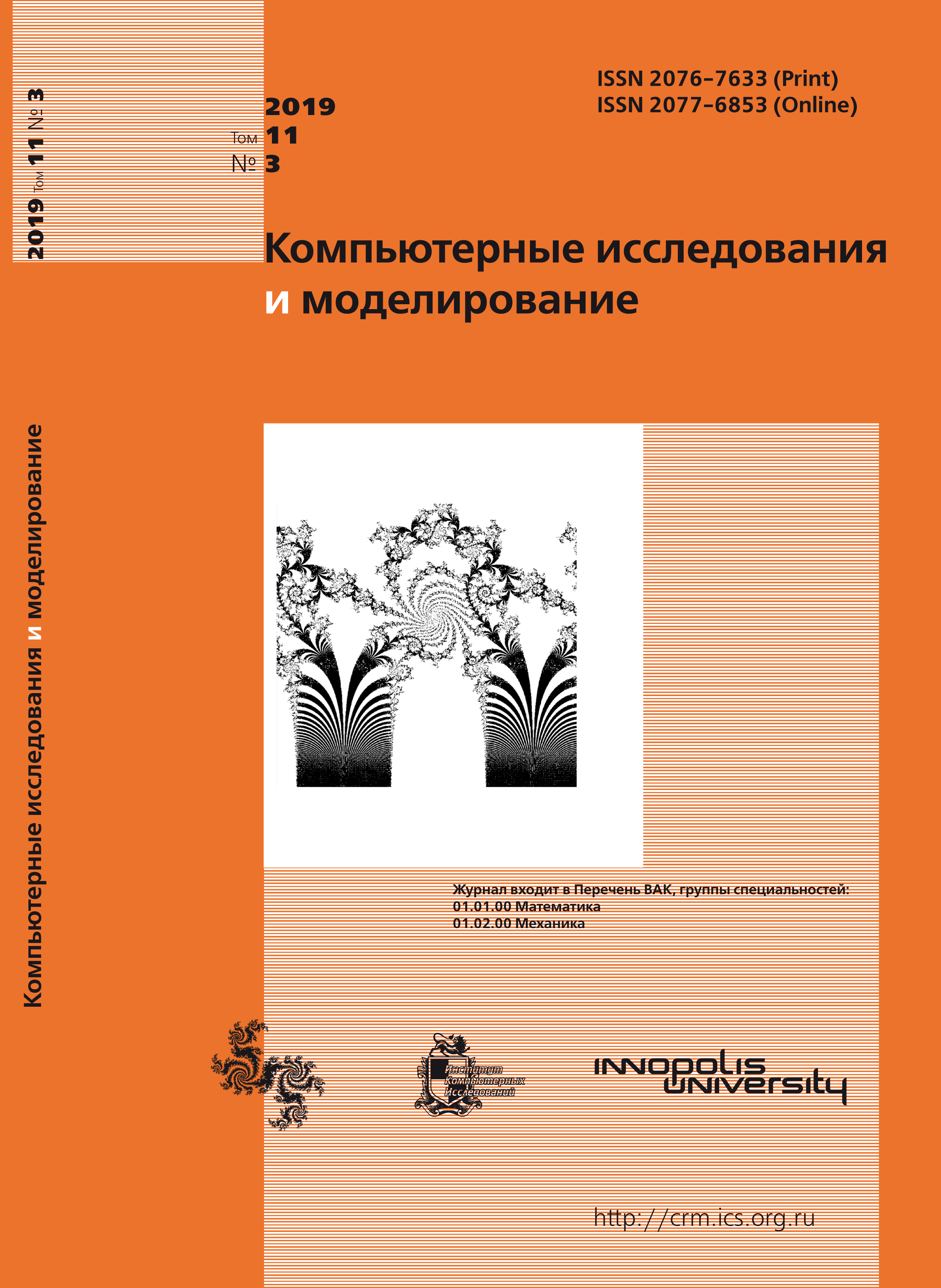Все выпуски
- 2024 Том 16
- Номер 1 (специальный выпуск)
- 2023 Том 15
- 2022 Том 14
- 2021 Том 13
- 2020 Том 12
- 2019 Том 11
- 2018 Том 10
- 2017 Том 9
- 2016 Том 8
- 2015 Том 7
- 2014 Том 6
- 2013 Том 5
- 2012 Том 4
- 2011 Том 3
- 2010 Том 2
- 2009 Том 1
Нейронечеткая модель формирования нечетких правил для оценки состояния объектов в условиях неопределенности
Список литературы:
- . Трехступенчатый эволюционный метод формирования коллективов нейронных сетей для решения задач классификации // Программные продукты и системы. — 2012. — № 4. — С. 101–106.
- . Three-step evolutionary method of forming teams of neural networks for solving classification problems // Software products and systems. — 2012. — no. 4. — P. 101–106. — in Russian.
- , . Коэволюционный метод обучения алгоритмических композиций // Таврический вестник информатики и математики. — 2005. — № 2. — С. 51–66.
- , . Coevolutionary method of teaching algorithmic compositions // Tavrichesky herald of computer science and mathematics. — 2005. — no. 2. — P. 51–66. — in Russian.
- . Метод формирования нечеткого классификатора самонастраивающимися коэволюционными алгоритмами // Искусственный интеллект и принятие решений. — 2010. — № 3. — С. 98–106.
- . The method of forming a fuzzy classifier by self-tuning coevolutionary algorithms // Artificial Intelligence and Decision Making. — 2010. — no. 3. — P. 98–106. — in Russian.
- . Идентификация нелинейных зависимостей с помощью нечеткого логического вывода в системе MATLAB // Математика в приложениях. — 2003. — № 2(2). — С. 9–15.
- . Identification of nonlinear relationships using fuzzy inference system in MATLAB // Mathematics in Applications. — 2003. — no. 2(2). — P. 9–15. — in Russian.
- , . Neural network model of human intoxication functional state determining in some problems of transport safety solution // Computer Research and Modeling. — 2018. — V. 10, no. 3. — P. 285–293. — DOI: 10.20537/2076-7633-2018-10-3-285-293.
- , . UCI Machine Learning Repository. — Irvine, CA: University of California, School of Information and Computer Science, 2013. — http://archive.ics.uci.edu/ml.
- , , , . Exponential synchronization of a class of neural networks with sampled-data control // Applied Mathematics and Computation. — 2017. — no. 315. — P. 150–161. — MathSciNet: MR3693461.
- , , . Approach to the search for similar software projects based on the UML ontology // Advances in Intelligent Systems and Computing. — 2018. — no. 680. — P. 3–10. — DOI: 10.1007/978-3-319-68324-9_1.
- , , , . Neural network method of dynamic biometrics for detecting the substitution of computer // Journal of Advanced Research in Dynamical and Control Systems. — 2018. — no. 10. — P. 1723–1728. — 10 Special Issue.
- , . ANFIS: Adaptive-Network-based Fuzzy Inference Systems // IEEE Tranc. on Systems, Man and Cybernetics. — 1993. — V. 23. — P. 665–685. — DOI: 10.1109/21.256541.
- , . Expert diagnostic system of water pipes gusts in reservoir pressure maintenance processes / 2nd International Conference on Industrial Engineering, Applications and Manufacturing, ICIEAM. — Proceedings. — 2016. — 7911651.
- , , . Neuro-fuzzy model of complex objects approximation with discrete output / 2nd International Conference on Industrial Engineering, Applications and Manufacturing, ICIEAM. — Proceedings. — 2016. — 7911653.
- , , , . Adaptive fuzzy funnel control for a class of strict feedback nonlinear systems // Neurocomputing. — 2017. — no. 241. — P. 71–80. — DOI: 10.1016/j.neucom.2017.02.030.
- , , . An ontology-based model of technical documentation fuzzy structuring // CEUR Workshop Proceedings. — 2016. — no. 1687. — P. 63–74.
- . Expert deduction rules in data mining with association rules: a case study // Knowledge and Information Systems. — 2019. — no. 59(1). — P. 167–195. — DOI: 10.1007/s10115-018-1206-x.
- , . Mathematical Modeling of Observed Natural Behavior: a Fuzzy Logic Approach // Fuzzy Sets and Systems. — 2004. — V. 146. — P. 437–450. — DOI: 10.1016/j.fss.2003.09.005. — MathSciNet: MR2082237.
- , , , . Fuzzy Soft Expert System in Prediction of Coronary Artery Disease // International Journal of Fuzzy Systems. — 2017. — no. 19(5). — P. 1546–1559. — DOI: 10.1007/s40815-016-0255-0.
- . The boosting approach to machine learning: An overview / MSRI Workshop on Nonlinear Estimation and Classification. — 2001. — 23 p. — Berkeley, CA. — MathSciNet: MR2005788.
- , . Michigan and Pittsburgh Methods Combining for Fuzzy Classifier Generating with Coevolutionary Algorithm for Strategy Adaptation / Proc. of 2011 IEEE Congress on Evolutionary Computation. — 2011. — New Orleans, LA, USA.
- . Bootstrap methods for multivariate hypothesis testing // Communications in Statistics: Simulation and Computation. — 2017. — no. 46(10). — P. 7654–7667. — DOI: 10.1080/03610918.2016.1248573. — MathSciNet: MR3764993.
- , , . An adaptive fuzzy logic system for the compensation of nonlinear distortion in wireless power amplifiers // Neural Computing and Applications. — 2018. — no. 30(8). — P. 2539–2554. — DOI: 10.1007/s00521-017-2849-3.
- , . Identification of dynamic diagnostic models with the use of methodology of knowledge discovery in databases // Engineering Applications of Artificial Intelligence. — 2007. — no. 20(5). — P. 699–707. — DOI: 10.1016/j.engappai.2006.11.002. — MathSciNet: MR2711352.
- . Soft computing and complex system analysis // International Journal of General Systems. — 2001. — no. 30(1). — P. 71–88. — DOI: 10.1080/03081070108960699.
- . Fuzzy Sets // Information and Control. — 1965. — V. 8. — P. 338–353.
Журнал индексируется в Scopus
Полнотекстовая версия журнала доступна также на сайте научной электронной библиотеки eLIBRARY.RU
Журнал входит в систему Российского индекса научного цитирования.
Журнал включен в базу данных Russian Science Citation Index (RSCI) на платформе Web of Science
Международная Междисциплинарная Конференция "Математика. Компьютер. Образование"
Copyright © 2009–2024 Институт компьютерных исследований







